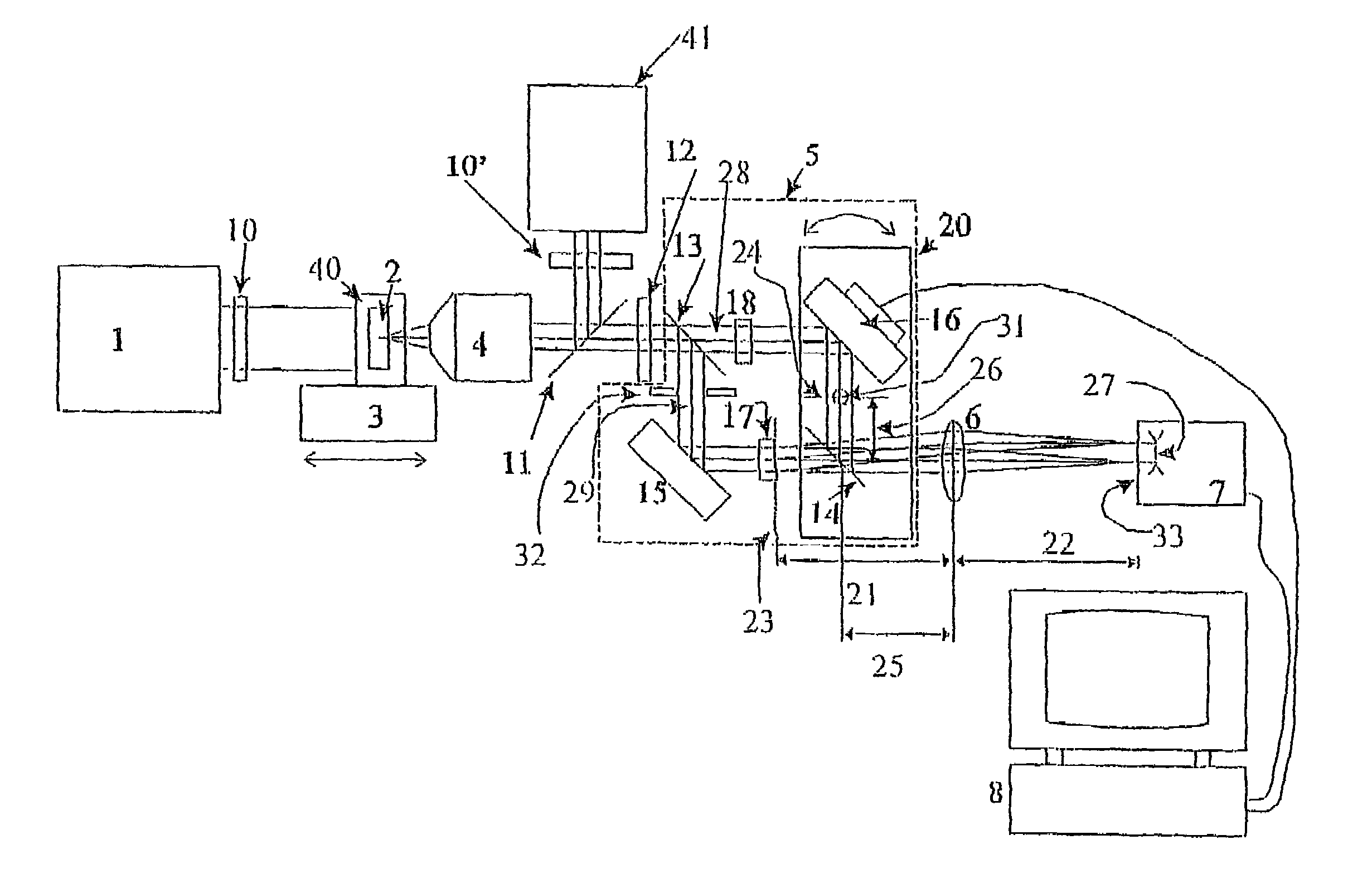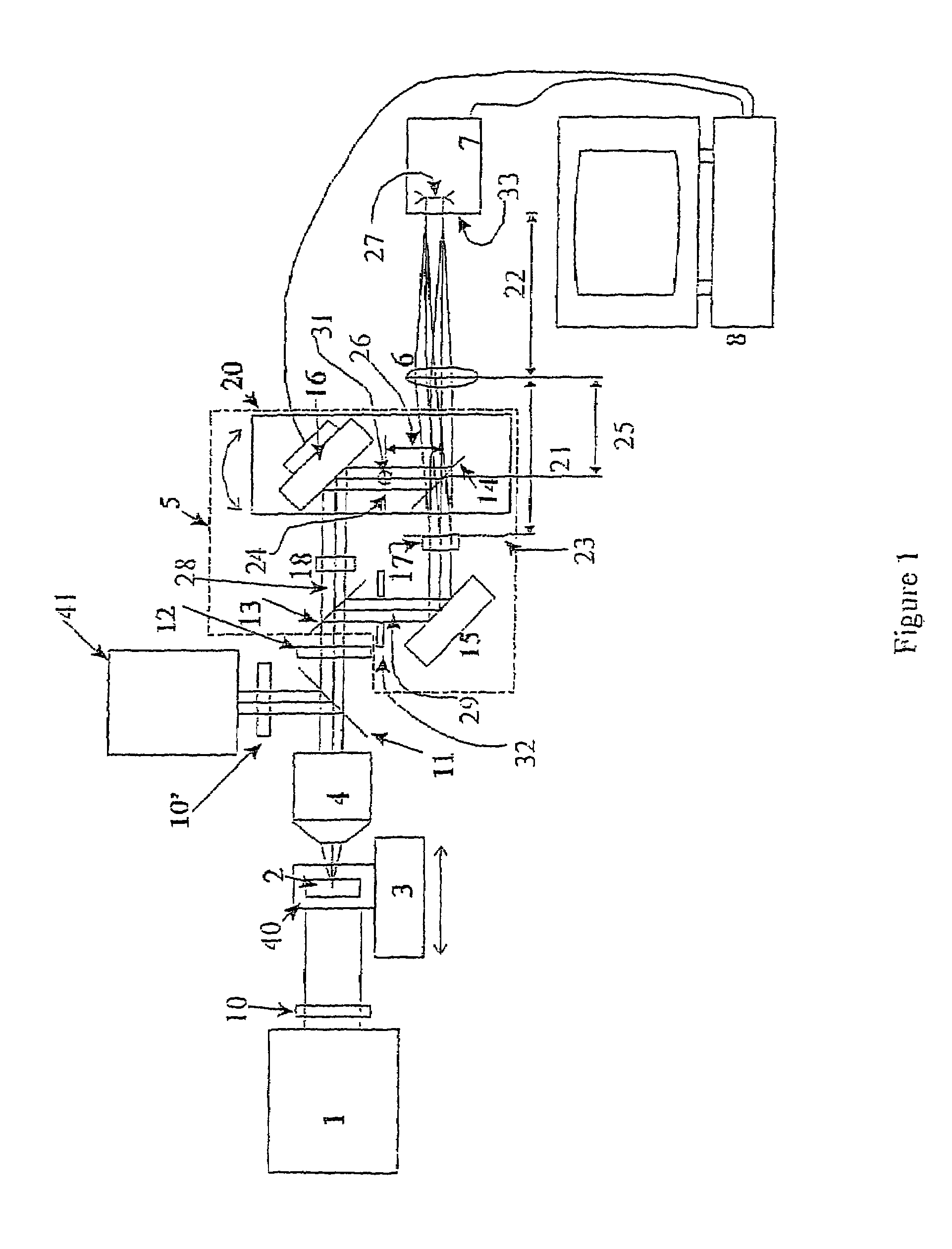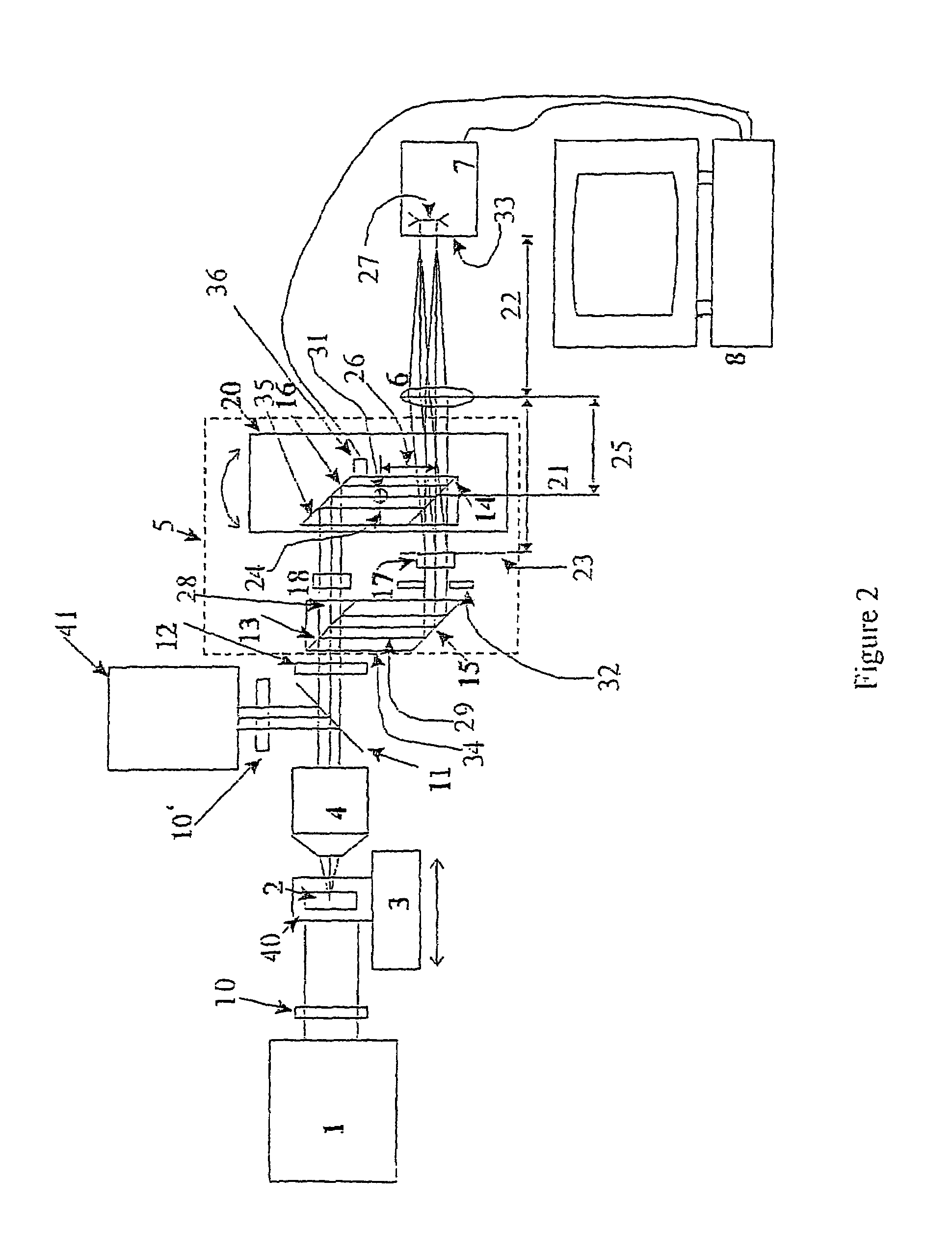Digital holographic microscope for 3D imaging and process using it
a holographic microscope and 3d imaging technology, applied in the field of digital holographic microscopes, can solve the problems of insufficient quality of obtained images, inability to use partially coherent illumination sources, and insufficient microscopy applications, etc., to reduce spatial coherence, reduce coherent noise, and reduce fringe contrast
- Summary
- Abstract
- Description
- Claims
- Application Information
AI Technical Summary
Benefits of technology
Problems solved by technology
Method used
Image
Examples
first preferred embodiment
[0096]A first preferred embodiment of the microscope according to the present invention is present in FIG. 1.
[0097]As shown by FIG. 1, in said first preferred embodiment, the microscope comprises illumination means 1 able to work in a transmission mode and illuminations means 41 able to work in a reflection mode. In this preferred embodiment, the microscope is thus able to work selectively in transmission mode or in reflection mode by selectively switching on the adequate illumination means 1 or 41, respectively, while the other illumination means 41 or 1 respectively remains switched off.
[0098]However, it is obvious for the man skilled in the art that a microscope according to the invention may comprise only one of said illumination means 1 or 41.
[0099]Said illumination means 1, 41 are partially coherent, and have to present, at least, partial temporal coherence. 41.
[0100]The microscope as illustrated in FIG. 1 also comprises a sample holder 40 able to receive a sample 2 under inve...
second preferred embodiment
[0133]A second preferred embodiment of a microscope according to the present invention is illustrated in FIG. 2. In this second embodiment, the first beam splitter 13 and the second reflecting element 15 are parts of a first prism 34, while the second beam splitter 14 and the first reflecting element 16 are parts of a second prism 35.
[0134]Said prisms 34, 35 are special custom prisms made in bulky optical transparent materials. Those one are preferably constituted by two optical parts cemented together. The reflecting elements 15 and 16 are implemented at the total internal reflection faces of the prisms 34 and 35. The beam splitters 13, 14 are located at the boundary between two cemented optical parts.
[0135]The second prism 35 is placed on the rotation plate 20, as in the previous embodiment to equalize the two interferometric paths.
[0136]The second prism 35 is also slightly rotated by a piezoelectric transducer 36 driven by the computer 8 around a second independent rotation axis ...
third preferred embodiment
[0140]A third preferred embodiment provides another way to create the same effect as the one obtained with the wedge 17 and its complementary optical compensator 18 as used in the first and second embodiments disclosed hereabove. In this third embodiment, the wedge 17 and the flat 18 are not present and the mirror 15 is placed on rotation and / or translation means in such a way that equalization of the optical path is kept and that the light intensity distributions are kept identical and equally positioned in the front focal planes 23 and 24 of the focusing means 6.
PUM
 Login to View More
Login to View More Abstract
Description
Claims
Application Information
 Login to View More
Login to View More - R&D
- Intellectual Property
- Life Sciences
- Materials
- Tech Scout
- Unparalleled Data Quality
- Higher Quality Content
- 60% Fewer Hallucinations
Browse by: Latest US Patents, China's latest patents, Technical Efficacy Thesaurus, Application Domain, Technology Topic, Popular Technical Reports.
© 2025 PatSnap. All rights reserved.Legal|Privacy policy|Modern Slavery Act Transparency Statement|Sitemap|About US| Contact US: help@patsnap.com



